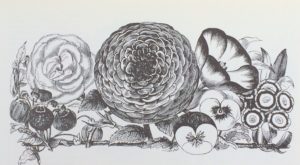MARCH GARDENING CALENDAR

MARCH GARDENING CALENDAR
March is a very busy month for Montana gardeners! A brief summary of things we can do now is: plant lettuce and spinach in cold frames; plant/prune cane fruits, fruit trees, deciduous trees; plant evergreens as soon as ground thaws; plant rhubarb, strawberries, asparagus, sea kale, and artichokes; weed and clean borders, plant perennials, sow seeds of hardy annuals and biennials outside; sow seeds of tender annuals and vegetables inside. Clean pansy beds and manure them; cover cold frames at night and admit air during the day.
VEGETABLES
Late in the month, begin to harden off cool loving vegetables (from a January sowing) in frames. Sow indoors: broccoli, cabbage, cauliflower, kale, kohlrabi, head lettuce, artichokes, Brussels sprouts, Asian cabbage, greens, peppers (finish peppers early in the month). Start tomatoes also. Late in the month direct-sow outdoors: asparagus, beets, arugula, carrots, celery, chervil, chives, cilantro, dill, fennel, collards, mache, fava beans, cress, kale, kohlrabi, leeks, lettuce, mustard greens, rhubarb, turnip greens, onions, parsley, peas, radishes, scallions, spinach and Swiss chard. As soon as weather permits plant: asparagus roots, broccoli, cabbage, cauliflower, garlic, shallots, lettuce, onion sets and plants, horseradish, strawberries and Jerusalem artichokes. Finish sowing herb seeds this month.
FLOWERS
Begin dividing perennials as soon as the ground is thawed. Direct sow outdoors: annual alyssum, pinks, sweet Williams, stocks, rose campion, wall flowers, lychnis, lupines, lavateras, columbines, valerian, polyanthus, auriculas, Canterbury bells, cynoglossum, hollyhocks, honeysuckles, rockets, honesty, fox gloves, snapdragons, sweet peas, poppies, larkspur, cornflowers, nigella, lavatera, valerian, poppies, kiss-me-by-the-garden-gate and dill.
FRUIT
Fertilize (spread organics), plant and prune fruit trees, blackberries, raspberries, grapes, currants, blueberries. Clean strawberry beds and make new beds. Fertilize (spread organics) on strawberries and asparagus. Clean up after pruning fruit trees; remove dead wood, dropped fruit, and inspect trunks for egg masses. Spray Bordeaux mix on fruit trees that suffer from fire blight after carefully pruning out affected wood. (Cut 6 inches below signs of infection, sterilizing pruning tools between cuts with alcohol, or a 10% bleach solution.) Spray superior oil on dormant trees (before leaf out). Wait three weeks after dormant spray if you decide to spray lime-sulfur (use caution) as a fungicide on roses, lilacs, dormant shrubs, fruit trees, evergreens.
TREES, SHRUBS AND ROSES
Plant evergreens, roses and other shrubs during March. This month is the very best time of the year to move or plant evergreens. Wait until April to prune roses as canes often die back from late frosts if cut too early. Dress with your roses Epsom salts now, and apply wood ashes, compost, manure, alfalfa meal, bone meal, kelp meal, and other organic amendments to rose, perennial, fruit and vegetable garden beds.
A NOTE ON SEED
Now is a great time to test the germination on your stored vegetable seeds. To establish a percentage of germination for your seed, place 10 seeds in a moist paper towel, lay it on a plate; with a loose cover of plastic wrap, or a glass or plastic dome. Put the plate in a warm location and wait a few days. The number of seeds that germinate will give you a rough idea of the percentage of live seed you have. This kind of test is a good way to see if your old purchased seed, or seed that you have saved yourself, will grow.
Now is also a prudent time to plan which varieties of vegetables you might want to save seed from for next year. Once selected and growing, plan to save seed from your best plants. Choose plants mid-season in their fruiting and mark them with tags or labels, as ones to save seed from. Pick the fruits when past eating ripeness; clean the seed carefully. Dry it well before storing in clean, dry glass jars with metal lids. Label the jars carefully with variety name and year of harvest. Store your seeds in a cool, dark, dry place so they have the best chance of staying alive. Seed-saving techniques vary from species to species, so it is good to obtain as much information as you can before you try. A great book is Saving Seeds by Montana authors Robert Gough and Cheryl Moore-Gough; another is The Heirloom Gardener by Carolyn Jabs. An excellent book about seed starting, saving and plant propagation is: The Royal Horticultural Society Propagating Plants, Edited by Alan Toogood. These three books may not be the newest, but their information is detailed and practical, especially the latter book.
